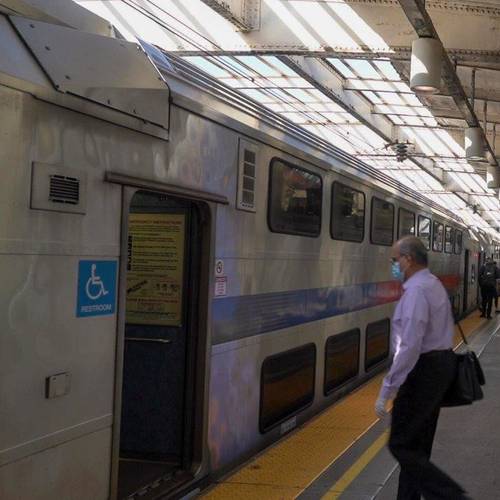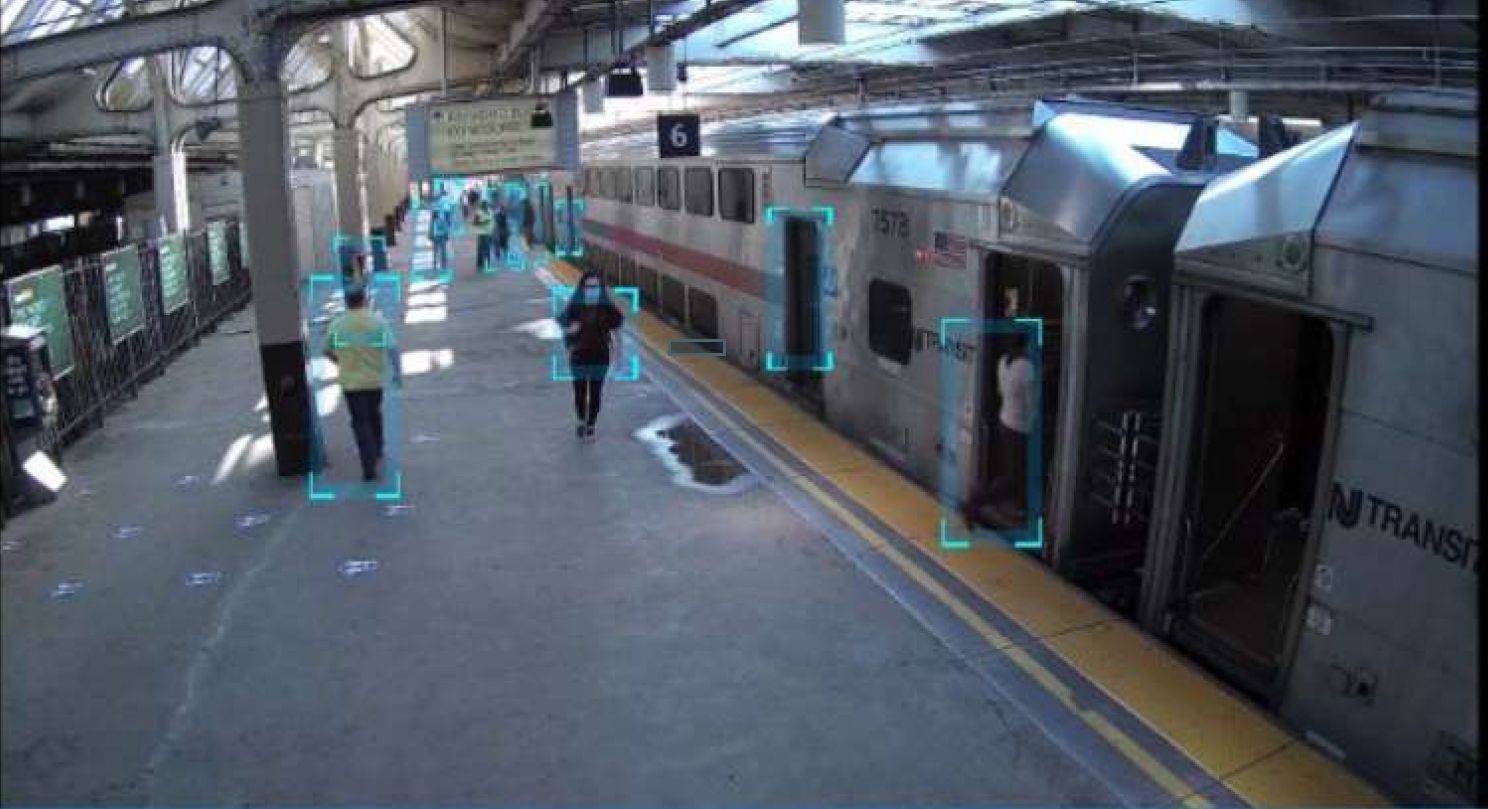


We completed a pilot program for NJ TRANSIT to demonstrate the benefits of a system-wide AI video analytics solution for studying real-time customer flow and crowd management practices.
The coronavirus pandemic upended all aspects of our lives, shutting down businesses, limiting in-person activities, and reducing travel and daily commutes. At the height of the pandemic in 2020, with ridership and revenue dramatically decreased, NJ TRANSIT turned to AECOM to help collect and convert data into meaningful and actionable insights that could enhance passenger safety, rail operations, and resource allocations.
The pilot program and live proof of concept (POC) represent a first step towards integrating this AI technology into NJ TRANSIT’s capital projects and daily operations — reducing risk and enhancing security and performance of facilities. The pilot has laid the groundwork for a system-wide emerging technology program that could, when implemented, provide real-time data on safety, security, infrastructure conditions, crowd management, incident response, and customer service levels to ensure safe and efficient travel for all NJ TRANSIT riders.

Using AI video analytics to boost safety and security of facilities
With heightened awareness for pandemic-related considerations, NJ TRANSIT needed a crowd-data capturing tool. The AI-powered technology solution provides a new way for NJ TRANSIT to capture real-time travel numbers while improving situational awareness of station environments, platforms, and even in train cars. The pilot program configured AI software along with existing cameras to capture and count passengers boarding, exiting, and waiting for trains at specific station platforms and routes. The solution uses heat mapping to assess crowd density and provides 24/7 security and safety monitoring.
Its problem-solving capabilities can help NJ TRANSIT personnel gain insights from data to make informed decisions. The tool's capabilities include:
- Collecting and sharing real-time train and car passenger capacity information,
- Obtaining and circulating train and platform crowding information,
- Recording and analyzing dwell times to identify operational issues,
- Monitoring security and safety, including slip-and-fall and smoke/fire situations,
- Identifying large objects on platforms and trains (bicycles, wheelchairs, strollers, and suitcases), and
- Distributing alerts for suspicious or left packages.
It can also provide:
- Enhanced advertising data and opportunities for revenue generation.
- Fare evasion detection and other applications.
- Automated camera health and maintenance monitoring, and
- Overall data gathering and passenger traffic to enhance customer experience.

Providing a model for a network-wide solution
In the initial phase of the pilot program, we tested the use of existing cameras paired with AI software for three rail lines: the Northeast Corridor (NEC) Line, the Hudson-Bergen Light Rail (HBLR), and the Morris & Essex (M&E) Line. To assess the effectiveness of the AI technology, we integrated AI software into the existing video camera system and developed an application where users could see the results. As part of the live POC, our team rapidly deployed AI technology to capture and analyze data using a 4G LTE mobile network at Newark Penn Station during morning rush hour.
In the next phase, we conducted a gap analysis to assess equipment and infrastructure required (cameras, sensors, network, etc.) for a heavily traveled corridor such as NEC or M&E and demonstrated the benefits of a broader video analytics system and network platform. Using the M&E line’s Orange Station as a model for a network-wide solution, we defined and progressed the best design (including equipment specifications), timeline, and total budget needed for a system-wide rollout.
Improving the customer experience while enhancing emergency and daily operations
Using AI, we helped NJ TRANSIT evaluate and deploy real-time solutions to address social distancing, crowding, and other related safety considerations on its rail network. While the pilot program delivered immediate benefits, we anticipate even greater advances as NJ TRANSIT continues the AI program and camera coverage improves at stations and rail lines. Efficiencies gained through AI, big data analytics, and IoT sensor technology will help NJ TRANSIT improve the customer experience with real-time travel information.
Soon, AI will help provide riders with dynamic, relevant information in real time shared through mobile apps, websites, and on the station’s digital signage areas. By sharing data across all its business lines and services, NJ TRANSIT will also be able to enhance both emergency and daily operations. As a result of our successful pilot program, NJ TRANSIT is better prepared to deploy AI-powered technologies to enhance rail reliability throughout New Jersey.